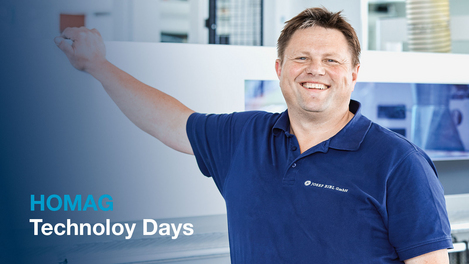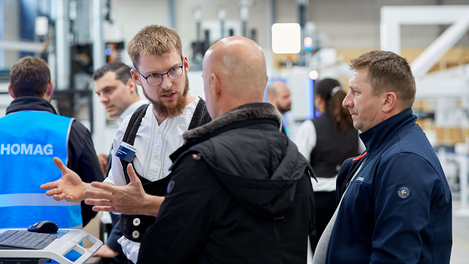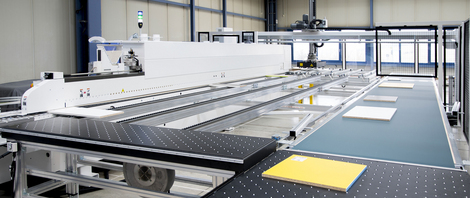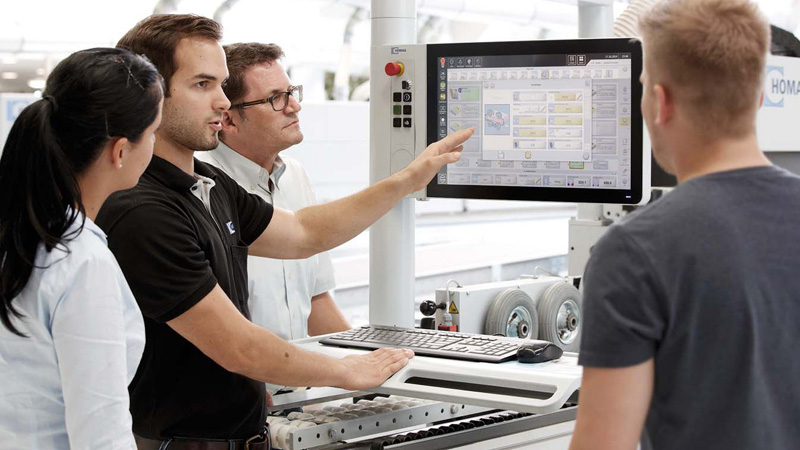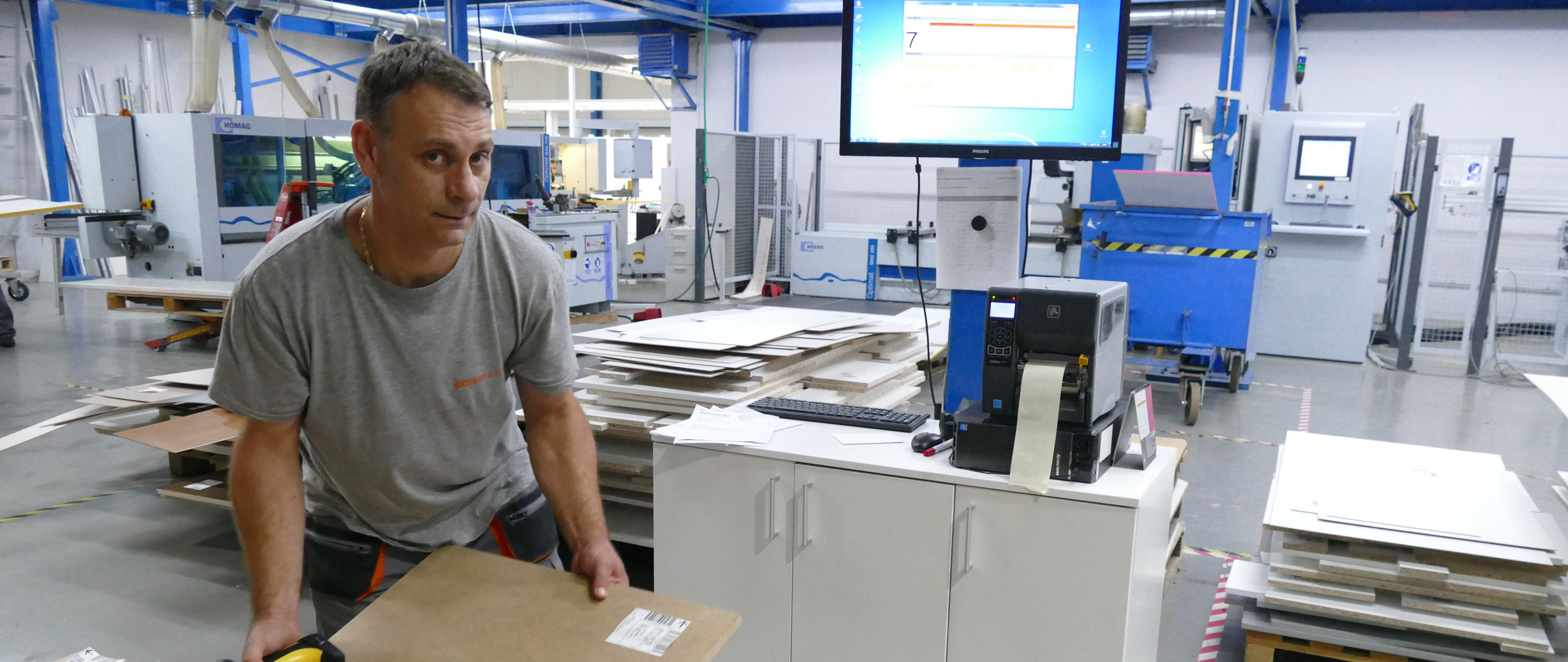Networked Workshop (Part 1): Why Company Size Doesn't Matter
When faced with increasingly demanding customers, rising levels of competition and a lack of skilled personnel, every business needs to find solutions. In the field of joinery and carpentry, this is why the focus has turned to intelligent production concepts, integrated software solutions and effective organization.
Trends in the furniture industry continue to be determined by customers' desire to buy individual products at attractive prices. This actually plays to the trade's traditional strengths — namely having direct contact with the customer, offering excellent consultancy expertise and delivering a high degree of flexibility in individual solutions. In order to ensure long-term success, businesses now need to find the right solutions to cope with rising levels of competitive pressure with regard to quality, cost and delivery time. They also need to confront the lack of skilled personnel in an intelligent way.
Joinery of the Future
With our vision of a "networked workshop" for the future, we want to show trade businesses how they can develop further in terms of technology and organization so that they will be able to offer their products—furniture and other objects made by joiners and carpenters—at an improved quality level and at competitive prices.
The trade is all about networking. This is especially true now that the boundaries between trade businesses and industrial enterprises are becoming increasingly blurred. At present, trade businesses have to be a particular size and demonstrate a particular level of performance in order complete certain jobs.
Matters that only previously concerned industrial enterprises—such as barcode control systems, automated machine interlinking and the use of production control systems—are now becoming a concern for small businesses too. In all of these endeavors, they are aiming to keep up with the competition. To achieve this aim over the long term, the future of joinery is focused on efficient vertical and horizontal networking (see the information box on the right). In specific terms, this means increasing machine automation, implementing a continuous flow of information from sales to production, and organizing the surrounding environment effectively. Some important tools required to achieve this include:
- Industrial systems and/or CAD/CAM systems with automatic data generation for production and CNC
- High-performance, automated, flexible production cells with automatic or organizational interlinking
- Consistent barcode-controlled production
- Workpiece acquisition/identification via barcode, QR code or RFID
- Production control system for detailed production planning and for monitoring job progress
- Automated monitoring and evaluation of machine usage and maintenance intervals
- Preventative maintenance work (e.g. replacing the spindle before spindle damage occurs and causes unplanned idle time)
- Digital networking with service teams at machine and software manufacturer
Automation is Everyone's Business
Increasing capacity, improving quality, offering delivery reliability, reducing unit costs — these are some of the obvious reasons why carpenters, joiners and window manufacturers are getting to grips with the issue of automation. Another key factor is the increasing shortage of skilled personnel and apprentices. When competing for skilled employees, it is therefore becoming more and more important for businesses to present themselves as innovative companies that offer staff an interesting and enjoyable working environment. When it comes to employees, this is why ergonomics play a central role — and automation can contribute significantly in this respect. For example, when large, heavy components need to be processed, the only way to move them is often by using the combined strength of multiple people. This comes with the quality issues that always accompany manual handling. Modern saw-storage combinations or feedback systems on edge banding machines are just two examples of how businesses of any size can significantly improve quality and noticeably increase their throughput and efficiency at the same time.
A Focus on People
Even when the whole world is discussing networking and interlinking machines, people still play the most important role. After all, even though all of the components in a networked production process communicate with each other, the employees are always key to achieving success. They monitor the production sequence and apply their experience. People are the only universal sensors we know and are indispensable as decision makers. Not everything can be automated and employees continue to play a key role in both the workshop and the production hall. It is clear, however, that the type of work they do is changing as a result of processes becoming networked and automated. This presents every business and employee with both an opportunity and a challenge.
Avoid Errors, Reduce Costs
It is not just in manual handling processes that errors can occur. By incorrectly operating machinery or making errors when programming, employees can quickly generate significant costs or even stop production altogether. This is where software comes into play as the linchpin of modern production, in addition to the automation of processes and machines. Consider the issue of data entry for example: By connecting barcodes and maintaining a continuous data flow, it is also possible to avoid errors across all machines.
Improving Productivity and Sales
By achieving a perfect harmony of software, machines and organization, businesses can give themselves a significant competitive advantage. One major benefit is an improvement in productivity and sales. If CNC programming is moved to the office, for example, then the capacity on the CNC will increase. This will increase production capacity, resulting in a direct increase in sales. Other work processes can be simplified by networking the office and the production area. CNC programs can be saved centrally on the server, allowing new programs or changes to be available instantly on all machines. By using barcode labels, programs can be automatically loaded onto the machines and additional work steps like assembly or commissioning can be simplified. To achieve this, it is necessary first of all to establish the correct infrastructure in the company. Every machine must be connected to the network and data storage must be organized centrally on the server.
Keeping Efficiency Up and Costs Down
Another advantage is that productivity will increase and costs will fall as a result. This can significantly reduce the amount of programming required, as well as make work preparation more efficient and minimize the number of manual work steps involved. Production throughput times also become shorter, since complete production information is available for all of the elements being manufactured. Through individual part drawings, wood lists, labels and complete CNC programs, errors and subsequent queries are avoided to a considerable extent. This in turn significantly reduces quality costs. The formula behind all of this is automated data generation, with a focus on optimizing data processing during work preparation. The question is: How do you get from the customer request to the production data? This may be achieved by using a CAD/CAM system like woodCAD|CAM. At the same time, this makes the business more flexible in terms of its product range, since individual items can be planned and produced in a much more cost-effective way.
Transparent Organization of the Workshop
The next step toward "joinery of the future" is horizontal networking and the optimization of production processes that accompanies it. At present, production planning in the trade is usually left to the workshop manager. Tasks in the workshop are organized manually based on a great deal of experience, instinct and a commitment to the job. What this approach lacks is transparency, since the current situation in the workshop is not immediately clear. Questions about workload ("Do I have enough capacity to complete this job on time?"), job progress ("Have I produced all the components for job XY yet?") and machine utilization cannot be answered directly. It is here that we find the key to achieving further optimization. In future, the organization of production will involve greater transparency and will be supported by software, from production planning and capacity planning to order and parts tracking, right through to the organization of reworking, order picking and shipping. The component will become a "smart workpiece" in the production control system, meaning all of the relevant information about it can be retrieved at any time.
Software Keeps the Machine Running
When considering these aspects, the correct machine technology is not the only thing needed to keep a business viable for the future. When planning to invest in machine technology, joiners and manufacturers must consider even at this early stage that, ultimately, optimum performance can only be achieved if the machinery is well organized and equipped with the correct software.
The Crucial First Step
Every company is different — and that means they will differ in terms of how they embrace networking. The perfect solution for a specific business is always made up of multiple components that must be individually combined and customized: smart machinery, intelligent software concepts, optimal workshop organization and efficient service structures. They provide major opportunities for companies to get themselves ready to face the many challenges of the future — and these opportunities have nothing to do with company size. In particular, approaching the issue in a gradual and tactical manner can make the necessary work more manageable. Every workshop's starting point for developing their concept should be a serious, professional and comprehensive consultation process.
In Part 2—"Ready for the Future in Three Steps"—you will discover how you can achieve this goal in a successful and systematic way.

